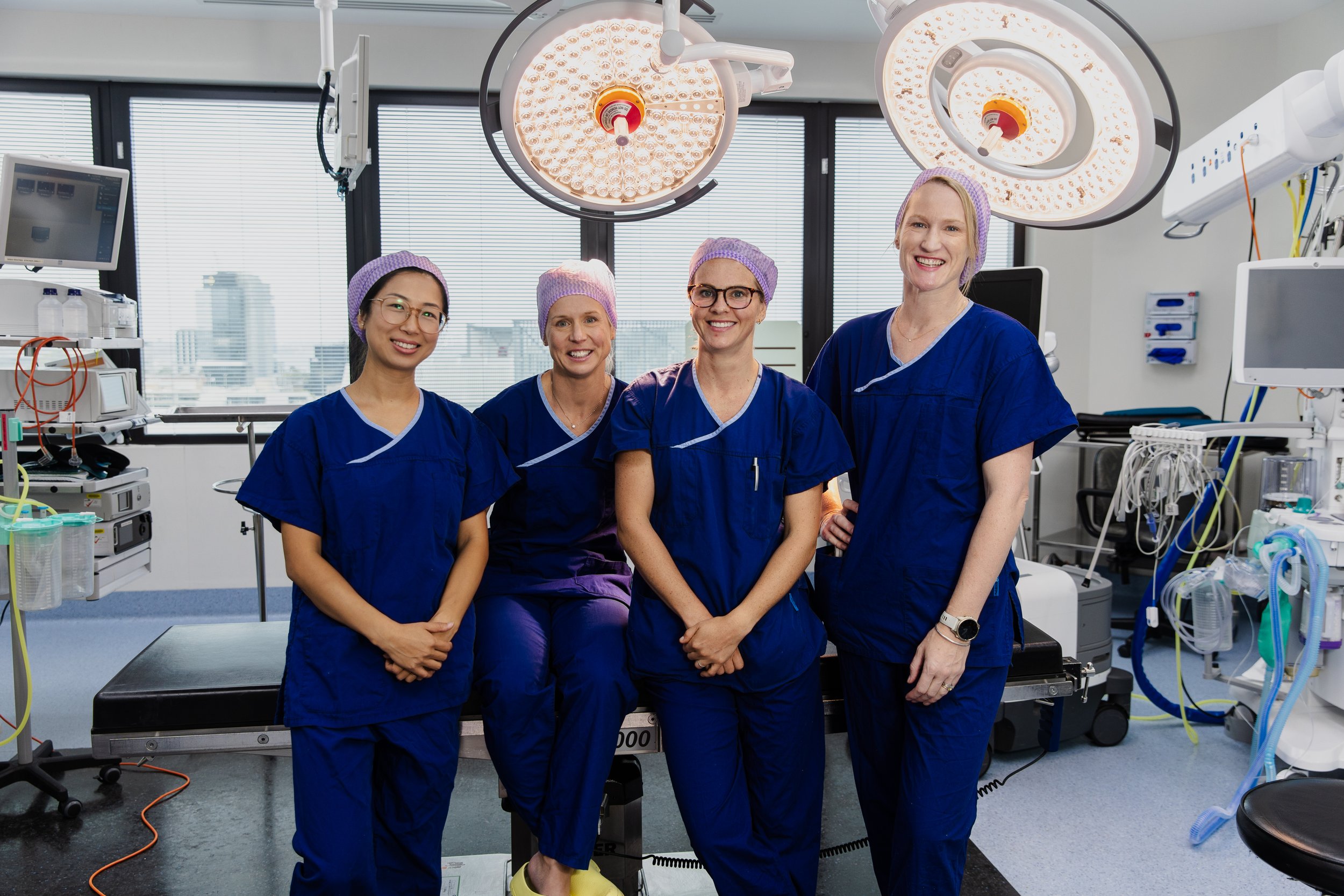
Diagnostic and Surgical Procedures
Discover advanced diagnostic and surgical solutions tailored to your gynaecological needs at Berth. Our clinic offers a comprehensive range of procedures designed to provide precise diagnosis and effective treatment.
-
Cervical Screening Test
A cervical screening test or Pap smear, is a screening procedure used to detect cervical cancer or abnormalities in the cervix. During the test, cells from the cervix are collected and examined under a microscope. Regular cervica screens are essential for early detection and prevention of cervical cancer.
-
Implanon Insertion
Implanon is a small, flexible rod inserted under the skin of your upper arm. It releases hormones to prevent pregnancy for up to three years. This long-acting reversible contraceptive (LARC) offers a convenient and reliable option for those seeking extended contraception without daily maintenance.
-
IUD Insertion
There are several options for intrauterine devices (IUDs), such as Mirena, Kyleena, and the Copper IUD. These T-shaped devices are placed inside the uterus, offering effective contraception for several years. In addition to preventing pregnancy, hormonal IUDs like Mirena and Kyleena can help manage heavy menstrual bleeding.
-
Colposcopy
Colposcopy is a procedure used to closely examine the cervix, vagina, and vulva for signs of disease, typically after an abnormal cervical screening test result. A colposcope, a special magnifying instrument, is used to identify any abnormal areas that may require further investigation or treatment.
-
Hysteroscopy
Hysteroscopy is a procedure that allows a doctor to look inside the uterus using a thin, lighted tube called a hysteroscope. It is used to diagnose and treat conditions such as abnormal bleeding, fibroids, polyps, and uterine septums. During a hysteroscopy, instruments can also be passed through the hysteroscope to perform procedures like biopsy or polyp removal.
-
Laparoscopy
Laparoscopy is a minimally invasive surgical procedure used to examine and treat conditions affecting the abdomen and pelvis. A laparoscope, a thin, flexible tube with a camera and light, is inserted through small incisions in the abdomen. It is commonly used to diagnose and treat conditions such as endometriosis, ovarian cysts, and pelvic adhesions. Laparoscopic surgery typically offers faster recovery times and less scarring compared to traditional open surgery.
-
Dilation and Curettage (D&C)
Dilation and curettage (D&C) is a surgical procedure used to diagnose and treat conditions affecting the uterus, such as abnormal uterine bleeding, miscarriage management, or to remove tissue remaining after childbirth or abortion. During a D&C, the cervix is dilated, and tissue lining the uterus is scraped or suctioned out.
-
Myomectomy
Myomectomy is a surgical procedure to remove fibroids (benign tumors) from the uterus while preserving the uterus itself. It is performed to relieve symptoms such as heavy menstrual bleeding, pelvic pressure, or pain caused by fibroids. Myomectomy may be performed through open abdominal surgery or minimally invasive techniques such as laparoscopy or robotic surgery.
-
Hysterectomy
Hysterectomy is a surgical procedure to remove the uterus. It may also involve removal of the cervix, ovaries, and fallopian tubes, depending on the reason for surgery. Hysterectomy is performed to treat conditions such as fibroids, endometriosis, uterine prolapse, chronic pelvic pain, or certain types of cancer. Different approaches include abdominal, vaginal, laparoscopic, or robotic-assisted surgery.
-
Salpingectomy
Salpingectomy is the surgical removal of one or both fallopian tubes. It may be performed as part of treatment for ectopic pregnancy, to prevent future ectopic pregnancies, or as a prophylactic measure in cases of high genetic risk for ovarian cancer.
-
Tubal Ligation
Tubal ligation, commonly known as "having your tubes tied," is a surgical procedure for permanent contraception. It involves blocking or sealing the fallopian tubes to prevent eggs from reaching the uterus for fertilisation. This procedure is performed as a form of birth control for women who no longer wish to become pregnant.
-
Diagnostic Laparotomy
Diagnostic laparotomy is a surgical procedure that involves making a larger incision in the abdomen to directly visualise and examine the abdominal and pelvic organs. It is typically performed when laparoscopy or other minimally invasive procedures are not feasible or when a more thorough examination is needed to diagnose conditions such as severe endometriosis, cancer staging, or complex pelvic pathology.

